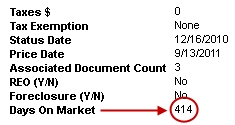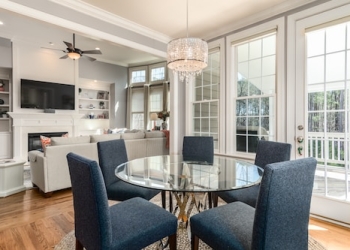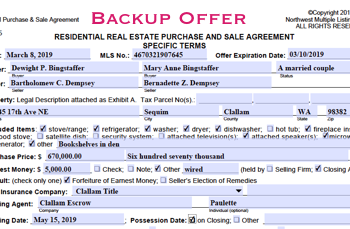 How does days on market or DOM affect buyers? This is an insightful question one of my clients asked me today. The question is relevant for both sellers and buyers. If you’re a seller, you’ve probably wondered how a large number of days on market (DOM) affects buyers and their thinking about a home and how much to offer.
How does days on market or DOM affect buyers? This is an insightful question one of my clients asked me today. The question is relevant for both sellers and buyers. If you’re a seller, you’ve probably wondered how a large number of days on market (DOM) affects buyers and their thinking about a home and how much to offer.
Days on Market – What is DOM?
First, let’s be clear on what we’re talking about. Days on market is called DOM in our multiple listing service (MLS), and it is the total number of days a home has been listed and in the MLS for sale. If DOM is 62, we know it has been for sale and listed in the MLS for 62 days. If DOM is 665, that tells us it has been on the market for 665 days or almost two years.
Do Buyers Care About Days on Market?
Buyers often ask how long a home has been on the market. If a buyer is not serious about a home, it becomes irrelevant, but if a buyer likes a home and might want to make an offer, the buyer’s attention will turn to the listing price and whether it is a reasonable listing price and a reasonable place to start the negotiations. This is why they ask about the DOM.
Intelligent Discussions over Days on Market
When I am representing a buyer and we get to the discussion about days on market, we talk about DOM in an intelligent way. We will talk about the total number of days on market, which includes the current listing plus the DOM of any prior listings. I already have looked up any previous listings to learn all I can about a home in the MLS, including the total cumulative DOM. This means that a listing agent cannot hide the truth by letting a listing expire and then renewing it. A good buyer’s agent will pull up all the listings, including the expireds.
If the days on market is a small number (under 180 days), then the number means nothing. The larger the number gets, the more a buyer may be wondering why it hasn’t sold, but the question always answers itself when we have an intelligent discussion. For example, a home with an unconventional floor plan will turn many retirees off, and that can account for why a home has not sold. I showed another home recently that has been on the market for a long time, and both the clients I showed it to told me why they were not going to make an offer. The home had a nice water view, but the bluff was in serous jeopardy, and there was a question about bluff stability. It probably would be okay for the next 20 years, but maybe not. Who needs the risk?
For homes like these that have a large number for days on market, it isn’t the number (the DOM) that affects buyers’ decisions to walk away or to make a low offer. It is the underlying shortcoming that makes the home worth less. So DOM is not the problem, but it may be a symptom of an underlying negative. (A foreclosure may fall into this category with a large DOM, and there are some homes in the lower to medium price ranges that are grossly over priced.)
There is another category of homes that are exempt from these rules. Luxury homes or high priced homes are exempt from any negative associated with a large DOM. When I have a discussion with qualified buyers of a luxury home that has been on the market for a long time, they understand that in a small market like the Sequim real estate market, there are not very many buyers for Sequim luxury homes. In all of 2011 only six homes sold for more than $700,000, and only two homes sold for more than $1 million.
Buyers who are qualified to buy a home in this upper price range understand that the homes will have a large number for days on market almost every single time. In this price range, DOM is irrelevant. What is relevant to buyers is the true FMV (fair market value) of the home. They aren’t looking for a garage sale price just because the real estate market is down, but they don’t want to overpay for a luxury home either. They are looking for location, perhaps a water view or mountain view, and quality and comfort. And then they want to know what a true appraised value would be.
Sequim buyers are typically very smart. They will look at days on market, but they look deeper to examine the location and quality of a home, and their decision to make an offer and the price they offer is based on the home itself rather than days on market.
Last Updated on February 3, 2012 by Chuck Marunde































